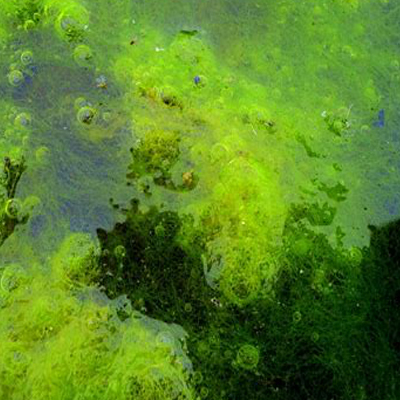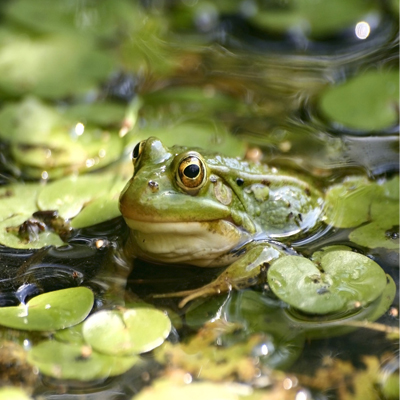Fertilizers
What Are Fertilizers?
Fertilizers are applied to add nutrients to the soil. Chemical fertilizers are compounds that combine the following elements: nitrogen, phosphorus, potassium, and secondary micronutrients: calcium, sulfur, copper, magnesium, iron, zinc, etc. The production of these chemicals is energy consuming and unsustainable. But most worrisome is the damage the runoff of nitrogen and phosphorus creates to our aquatic ecosystems, to the economy and to our health. Excess nitrogen and phosphorus in the air and water is one of today’s most widespread, costly and challenging environmental problems.

Nitrogen fertilizers stimulate leaf growth, but underdeveloped roots cause bad drainage and expand the need for water.

The effect of chemical fertilizers is temporary: without a healthy root system plants will soon need more added nutrients.

A poor root system cannot absorb excess nutrients or hold water. They will be washed into waterways causing algae blooms.

Organic matter will cause root systems to develop better. Organic particles in the soil will create absorbance and drainage.

Plants with good roots are more resilient to drought and to pests. The absorption of nutrients by the plant is slower but more even.

Healthy plants and roots and organic soil can hold water and nutrients better. Waterways will stay cleaner and healthier.
Deprivation of Nutrients
Since all plants are different there is no standard quantity of nutrients a plant should need. Native plants, by definition, thrive in the local soil and don’t need amendments. Yet there are some common yard issues that can cause a lack of nutrients:
- Erosion: Erosion takes place if there are not enough deep-rooted plantings to contain the soil.
- Over mulching: The breaking down of the mulch requires nitrogen, which will be pulled up from the soil, leaving less of it for the plants.
- Over watering: Too much water disturbs the take up of nutrients.
- Harvesting: Nutrients are removed from the soil when we harvest produce.
- Leaf blowing: Leaves create a seasonal addition of nutrients. If you blow them away, you are taking away the nutrients.
Chemical Fertilizers
Mulch
Grass clipping and leaves can be mulched on the lawn for nutrients. A thin layer of mulch or a light bedding of straw in winter can protect roots and will decompose quickly enough to create nutrients for the growing season.
Compost and Humus
Compost is somewhat more difficult to apply than the light and dry chemical fertilizers. But it is by far the best solution for the long term. Compost doesn’t just nurture your plants with a great mix of nutrients, but it also creates a better soil structure, it feeds the microorganisms in the soil, and helps store carbon, removing it from the atmosphere.
